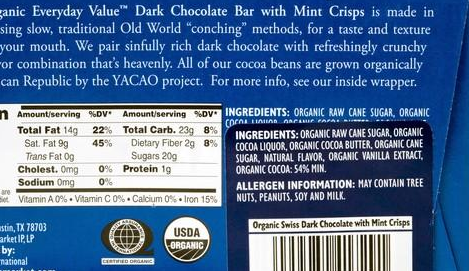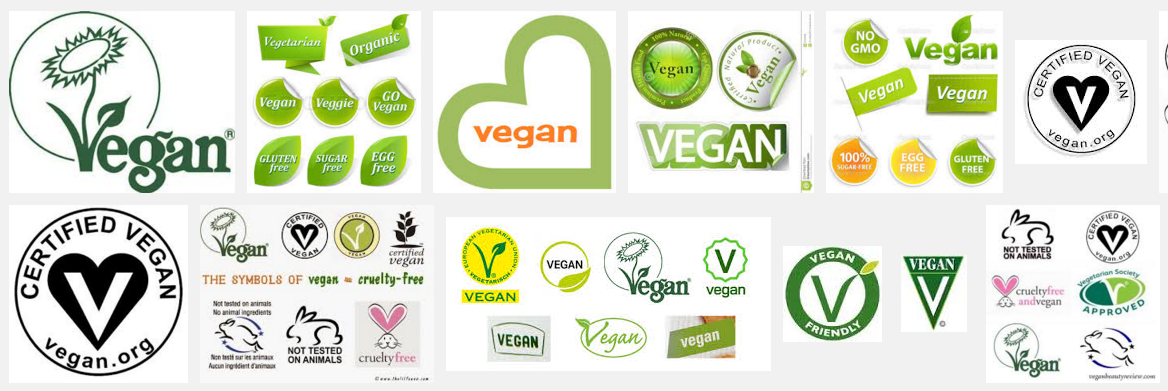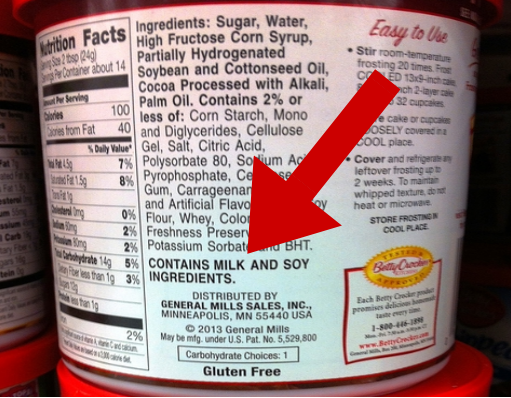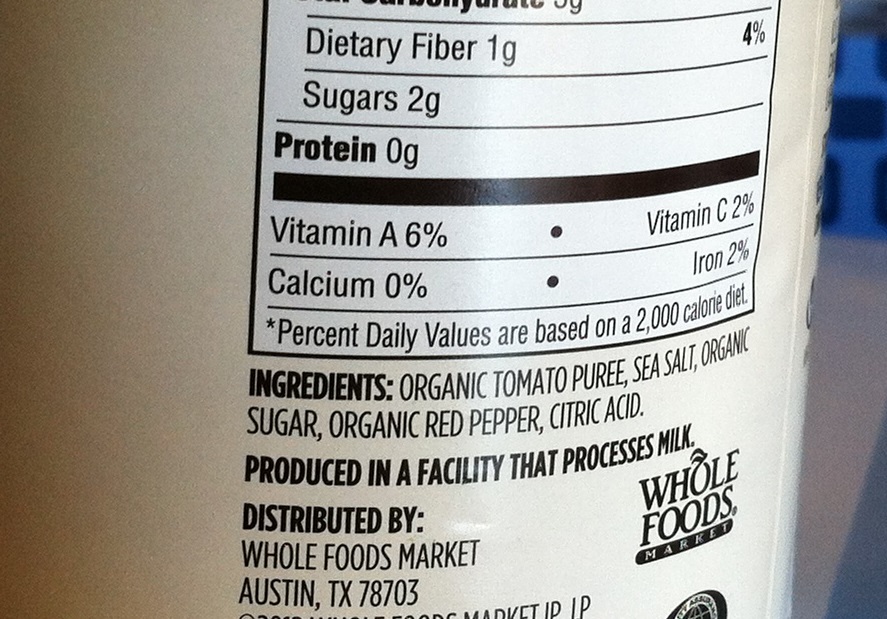Vegan How To: Reading Labels
Following up on last week’s post Vegan How To: Eating Out, let’s take a look at how to read labels and what to look for.
For me there are a few things I look for quickly: certified vegan and the list of allergens.
Thankfully many products now will say “vegan” somewhere on the packaging, and some even advertise it on the front, using some type of logo. There is no one standard, however the “certified vegan” black logo is quite common, as is the picture of the rabbit. Below are many different examples, and each product may vary, but you can rest assured if any of them grace your food’s package.
That’s the easiest way to tell and requires very little thought.
Then, it gets harder.
Next thing I look for if I don’t see vegan somewhere on the package is the list of allergens. Thankfully for us vegans, dairy and eggs are somewhat common allergens, and products are now required to label if they contain these items. Here is an example:
This information is always in bold and all caps at the end of the ingredients list. This makes scanning labels relatively easy if you are trying to avoid milk and eggs. You will often see “soy” and “wheat” listed as well, useful if you have allergies to those items.
It gets a little more confusing when the label says “May contain milk” or “produced in a facility that processes milk” or “may contain traces of dairy.”
In these situations here is what I do. If it is made in a facility that processes milk or it says “may contain traces of milk” I don’t sweat it. This information is on the label to protect the manufacturer in the small chance that someone with a severe dairy allergy comes into contact with their product. It essentially means that they cannot 100% guarantee that their product does not contain even a trace of milk. It does not mean it was made with milk or that there was any intention for milk to be in the product. If we are talking about a couple molecules, I’m alright.
 The trickier situation is when it says “may contain milk.” That is a bit more ambiguous and to me signals that there, for whatever reason, may be significant quantities of milk in the product. I’ve only seen this come up in the context of chocolate, and in those situations I did not purchase the product. I simply moved down the aisle and found a chocolate that was certified vegan. Makes my life simpler.
The trickier situation is when it says “may contain milk.” That is a bit more ambiguous and to me signals that there, for whatever reason, may be significant quantities of milk in the product. I’ve only seen this come up in the context of chocolate, and in those situations I did not purchase the product. I simply moved down the aisle and found a chocolate that was certified vegan. Makes my life simpler.
Beyond these concerns, there are literally hundreds of ingredients that are animal derived that you could potentially need to scour your label for. A few obvious ones I avoid are gelatin (made from skin, tendons, ligaments, etc), glycerin (made from animal fat when it doesn’t say “vegetable” glycerin), casein, and whey (both milk proteins).
A complete list can be found in your Happy Cow app, which after last week’s post you all should have 🙂
Here is Happy Cow’s list: http://www.happycow.net/health-animal-ingredients.html
(SIDE NOTE: Happy Cow totally saved me this week! I went hiking with friends and in the middle of nowhere Virginia was able to find a restaurant with abundant vegan options including an excellent vegan chili!)
But here’s the real deal. Instead of memorizing the hundreds of ingredients derived from animal products, if you are following a whole-foods plant-based diet, you shouldn’t be buying too many things with labels anyway.
The bulk of your diet should be whole fruits, vegetables, grains, beans, nuts and seeds. If any of those products do have labels, they should be one ingredient long.
Beyond that, for the few more processed items in your pantry and fridge, and the times when you crave an indulgence, stick to products that are either certified vegan or do not list eggs or dairy on their allergen list and you should be alright.
Check for cheese in your pasta sauce, whey on your chips, eggs or milk in your breads, and generally stick to as minimally processed foods as you possibly can. And, don’t sweat it if you accidentally ate something that had an ingredient that was derived from an animal. Unfortunately I’ve found an animal-based ingredient in dried mango before. They slip em into everything, and chances are good you’ll slip up from time to time.
The real motto is progress not perfection. Don’t expect perfection. And if you do, only buy whole foods! They can’t fool you 🙂
Please Subscribe To My YouTube Channel!
Sign Up For Personalized Health Coaching




